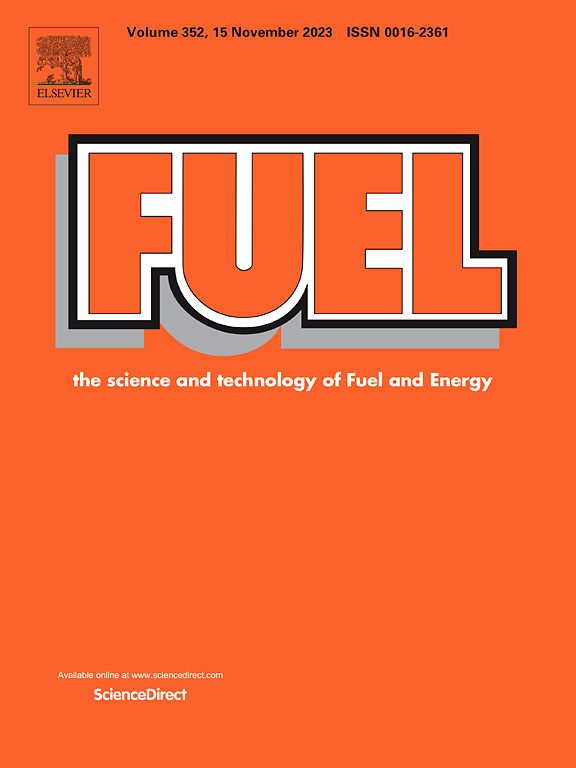Trio-amine blends combined with fly ash-catalyzed desorption: A synergistic approach for energy-efficient CO2 capture
IF 7.5
1区 工程技术
Q2 ENERGY & FUELS
引用次数: 0
Abstract
Blended amine systems are increasingly investigated to develop sustainable and energy-efficient CO2 capture processes. This work explores novel ternary amine formulations combining the tertiary amine 2-(2-(dimethylamino)ethoxy)ethanol (DMAEE) with 2-(ethylamino)ethanol (EAE), 2-amino-2-methyl-1-propanol (AMP), and piperazine (PZ). Their CO2 capture performance was assessed through absorption and desorption tests at 40 °C and 100 °C, respectively, and reaction pathways were elucidated via 13C NMR speciation analysis. Among the tested systems, the EAE:DMAEE:AMP 2:1:2 blend showed the best regeneration performance, achieving a ∼ 67 % reduction in energy demand compared to conventional 5 M monoethanolamine (MEA), while also improving desorption rate and cyclic capacity. To further enhance regeneration, a catalytic strategy was implemented using fly ash (FA), a low-cost solid acid catalyst previously validated for MEA. FA proved effective with the ternary blend as well, though its catalytic effect was less pronounced than with MEA. This behavior was rationalized by linking catalyst activity to solution speciation, showing that FA is more active in carbamate-rich systems. These findings highlight the potential of DMAEE-based blends for low-energy CO2 capture and suggest new design strategies for sorbents optimized for catalytic regeneration.
三胺混合物与粉煤灰催化脱附相结合:一种节能二氧化碳捕获的协同方法
混合胺系统越来越多地研究开发可持续和节能的二氧化碳捕集工艺。本研究探索了将叔胺2-(2-(二甲氨基)乙氧基)乙醇(DMAEE)与2-(乙胺)乙醇(EAE)、2-氨基-2-甲基-1-丙醇(AMP)和哌嗪(PZ)结合在一起的新型三元胺制剂。分别在40°C和100°C下通过吸附和解吸测试评估了它们的CO2捕获性能,并通过13C NMR形态分析阐明了反应途径。在测试的体系中,EAE:DMAEE:AMP 2:1:2的混合物表现出最好的再生性能,与传统的5 M单乙醇胺(MEA)相比,能源需求降低了~ 67%,同时还提高了解吸速率和循环容量。为了进一步提高再生能力,采用了一种使用粉煤灰(FA)的催化策略,这是一种低成本的固体酸催化剂,此前已通过MEA的验证。FA在三元共混物中也被证明是有效的,尽管其催化作用不如MEA明显。通过将催化剂活性与溶液形成联系起来,这种行为是合理的,表明FA在富含氨基甲酸酯的体系中更活跃。这些发现突出了基于dmae的共混物在低能耗CO2捕获方面的潜力,并为优化催化再生的吸附剂提供了新的设计策略。
本文章由计算机程序翻译,如有差异,请以英文原文为准。
求助全文
约1分钟内获得全文
求助全文
来源期刊

Fuel
工程技术-工程:化工
CiteScore
12.80
自引率
20.30%
发文量
3506
审稿时长
64 days
期刊介绍:
The exploration of energy sources remains a critical matter of study. For the past nine decades, fuel has consistently held the forefront in primary research efforts within the field of energy science. This area of investigation encompasses a wide range of subjects, with a particular emphasis on emerging concerns like environmental factors and pollution.
 求助内容:
求助内容: 应助结果提醒方式:
应助结果提醒方式:


